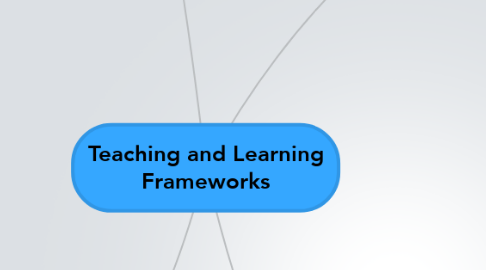
1. SAMR
1.1. degree to which technology is integrated into daily teaching and learning
1.2. when a teacher uses technology as a teaching tool it becomes either an enhancement or transformation
1.3. goal is to take students from the substitution level to the redefinition level
1.4. 4 level are: substitution, augmentation, modification, and redefinition
1.4.1. Substitution:teacher centric, direct tool of technology, can accomplish can thing with no computer, no grade difference
1.4.2. Augmentation: immediate feedback from students, becoming more student centric, more engagement, no grade difference
1.4.3. Modification: task redesign, peer and teacher feedback, more questions and participation, half grade difference possible
1.4.4. Redefinition: creation of new tasks, increase in collaboration, majority student centric, one full grade difference possible
2. TPACK
2.1. subject knowledge, teaching knowledge, and technology knowledge intersect within a Venn diagram
2.1.1. Content
2.1.1.1. subject matter
2.1.1.2. central facts, rules, concepts, theories, and procedures within a certain discipline
2.1.2. Pedagogical
2.1.2.1. how to teach
2.1.2.2. practices and methods of teaching
2.1.2.3. strategies for evaluation
2.1.3. Technological
2.1.3.1. all different kinds of technology tools
2.1.3.2. how to physically operate them
2.1.3.3. ability to learn and adapt to technology
2.2. all can interrelate with each other
2.3. each part of TPACK must work, in order for the entire framework to work and be effective
2.4. this is something that teachers are constantly working on and making improvements; not always straight forward to implement
3. 21st Century Knowledge
3.1. consists of foundational, meta, and humanistic knowledge
3.1.1. Foundational knowledge ties together content, literacy of information, and cross-disciplinary knowledge
3.1.2. Meta knowledge consists of ability to problem solve and think critically, smooth communication and collaboration, and creativity is essential
3.1.3. Humanistic knowledge includes awareness of varieties within cultures, also ethical and emotional awareness, and life and job related skills
4. Philosophy of Teachnology
4.1. stems from Philosophy of Teaching
4.1.1. which are your beliefs about your current teaching practices
4.2. belief about how technology can and should be used within the classroom
4.3. usually in the form of a written statement which teachers can modify with new experiences
4.4. personal philosophy about how you as a teacher use technology as a teaching tool
4.4.1. also includes how you use technology to enhance your teaching practices
